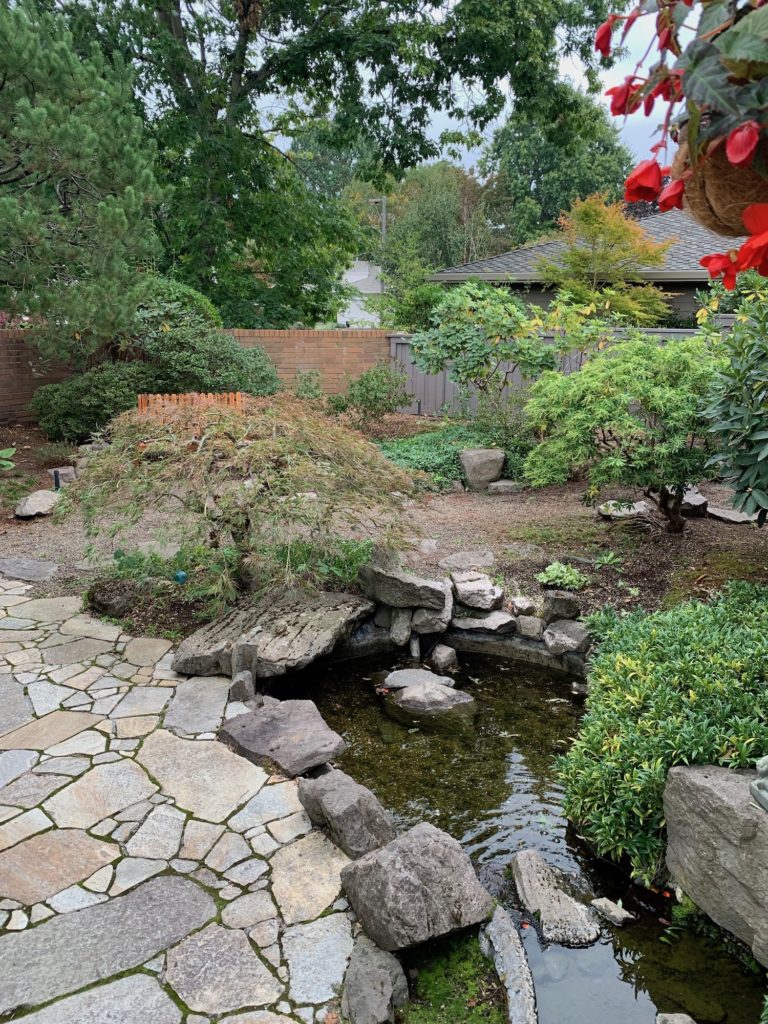In 40 years of aesthetic pruning of thousands of Japanese maples, this was by far the oldest and largest lace leaf maple I have ever pruned. It had not been pruned in decades! It looked like a giant mop head, but after five hours of expert aesthetic pruning, the hidden beauty of this queen of ornamental shrubs was amazingly revealed as you will see in this video. Please enjoy!
Tag Archives: Lace Leaf Maples
Video: Lace Leaf Japanese Maple Pruning Niwaki Style Tutorial
How to Prune Laceleaf Japanese Maples

The Wonderful and Exotic Laceleaf Japanese Maple
Laceleaf Japanese maples are some to the most graceful and elegant trees that one can plant the home garden. Often, having one in a prominent location for all to see is a highly desired status symbol because of their elegance. Laceleaf maples may even be considered to be at the top tier of all garden tree—the aristocrat of ornamentals, that is, if they’re well pruned. If not, they can look more like a scruffy, derelict mess!
Laceleaf maples are from the dissectum group of Japanese maples, and are so named because of their deeply dissected or incised leaves from one side of the leaf petiole or stem to the other giving them a lace-like appearance, hence their name. To add to the perfection of these lacey beauties, they generally have seven lobes. It is a deciduous tree that forms a mounding, shrubby shape and can be a single to multistemmed tree with cascading branching and a semi-weeping habit. The lacelef maple is generally slow-growing and typically reaching no more than four to six feet in height with a wider crown spread.
Due to the popularity of the laceleaf maple over the centuries, horticulturalists have developed more than 2,000 varieties with all variations of leaf colors and configurations. The bright reddish colors that many laceleaf maples turn in the autumn can be real eye-catching head turners.
The Japanese maples originate from the hills Japan, Korea, China and into eastern Mongolia and southeast Russia. The botanical name for the Japanese maple, Acer palmatum, is credited to the Swiss botanist and doctor Carl Peter Thunberg who lived in the late 1700s. Acer is the botanical name for maple, and palmatum refers to the hand-like look of the leaf.
The Japanese name for the Japanese maple is momiji meaning “the hand of a baby.”
Japanese Maples Vs. Laceleaf Japanese Maples
There are several broad categories of Japanese maples from which the more diminutive laceleaf variety derives.
- Upright Japanese Maples: Under the moniker of “Japanese maple” (the upright variety), there are hundreds of cultivars that come from three main maple varieties:
Acer palmatum. This is the largest family of Japanese maples. There are more than 1000 cultivars of acer palmatum worldwide. The word cultivar is a blend of the two words cultivate and variety and was coined as a botanical term in the 1920s.
Acer japonicum. This is a smaller family of Japanese maple with only a few varieties.
Acer shirasawanum— This is another smaller branch of the Japanese maple family with only a few varieties.
- Laceleaf Maples or the dissectum group of Japanese maples of Acer palmatum var. dissectum: Under the moniker of lace leaf (a.k.a. laceleaf or lace-leaf) Japanese (weeping, dome-shaped or cascading) maples, there are dozens of varieties for sale in nurseries. These trees are cultivars of the three main varieties of upright Japanese maples listed above. As such, they will have names, for example, like Acer palmatum “Red Feathers,” Acer shirasawanum “Green Snowflake” and so on.
Other Characteristics of Laceleaf Japanese Maples
Not only are laceleaf maples known for the showy leaves, but they have flowers as well. Blooming in the spring, these maples have small reddish flowers that occur on stalked, umbrella-shaped clusters. The individual flowers have five red or purple sepals and five whitish petals. The laceleaf maple is monoecious plant meaning that it contains both male and female flowers on the same tree. In other words, it is self-pollinating.
Continue reading